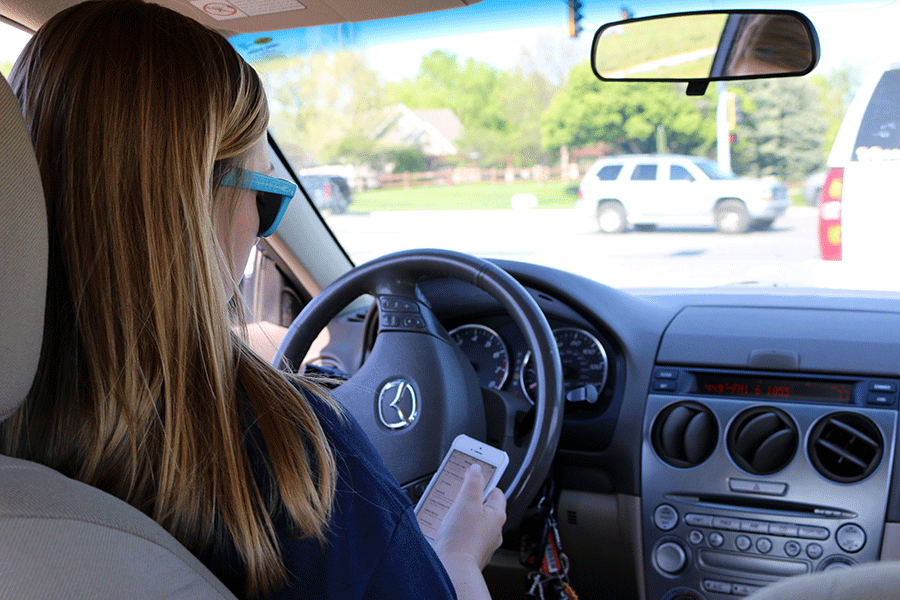Study shows distraction a major reason for car crashes involving teen drivers
Statistics from AAA study are four times higher than previously recorded by police records
May 1, 2015
The AAA Foundation for Traffic Safety recently released a study showing that over half of crashes among teen drivers were a result of driver distraction.
Approximately 1,700 crashes were recorded by researchers at the University of Iowa using a DriveCam, a system that projected both the driver and the simultaneous view out the windshield. Fifty-eight percent of these crashes derived from driver distraction, most popularly conversing or interacting with other passengers and using a cell phone. The majority of the drivers involved in the crashes were ages 16-19.
President and CEO of the AAA Foundation for Traffic Safety Peter Kissinger said the study has allowed many to realize the severity of driver distraction, specifically among teens.
“Access to crash videos has allowed us to better understand the moments leading up to a vehicle impact in a way that was previously impossible,” Kissinger said in a press release. “The in-depth analysis provides indisputable evidence that teen drivers are distracted in a much greater percentage of crashes than we previously realized.”
Previous statistics from the National Highway Traffic Safety Administration state that 14 percent of all crashes involve driver distraction. The results of the AAA’s study indicate that the actual amount of crashes due to driver distraction are four times the amount formerly recorded.
According to school resource officer Maurice Loridon, many teens do not realize they are driving distracted.
“Distracted driving includes the use of electronic equipment, eating, using headphones, or talking to other teens constantly in the car,” Loridon said.
In 15 percent of the crashes, the driver was talking or interacting with other passengers in the car, something senior Kylie Tennis sees as typical for teen drivers.
“Having other teens in the car while driving isn’t something [police] can control,” Tennis said. “Friends are your biggest distractors because laughing and talking with them is a big distraction that is different than driving on your own. [With friends in the car] you have more than one thing to focus on than the road.”
Similarly, junior Camille Gatapia said talking to other passengers when driving can be a major distraction to some people.
“When I’m in the car with my friends, we tend to talk to each other a lot,” Gatapia said. “Some people are able to handle the commotion, but others struggle with paying attention to the road and their friends at the same time.”
The driver was using a cell phone in 12 percent of the crashes recorded in the study, a distraction Gatapia sees as easily avoidable.
“[Texting and driving] is irresponsible, because it is so easy to not pick up your phone,” Gatapia said. “Whatever you are texting does not matter more than your life.”
Analyzing and understanding the causes of crashes among teens is necessary to develop effective solutions to reduce the risk of accidents, however, Loridon believes that a universal solution is virtually impossible.
“We can never solve the problem 100 percent, because it is a personal decision. Until society buys into the fact that we shouldn’t drive distracted, it will never happen,” Loridon said. “Accidents are accidents, and they’re not done on purpose. In my professional opinion, any accident is because a person is distracted.”









